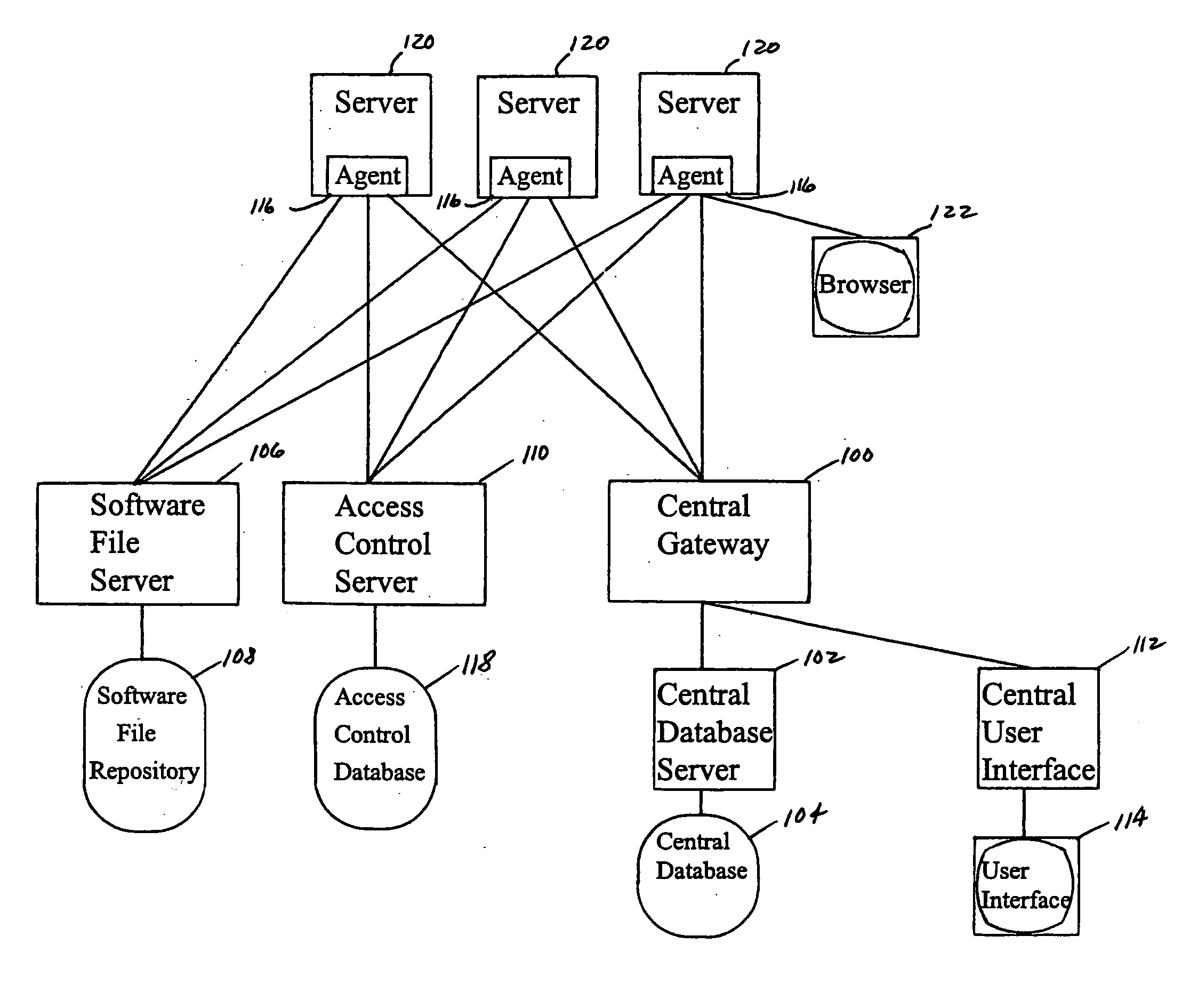System for registering, locating, and identifying network equipment
- Summary
- Abstract
- Description
- Claims
- Application Information
AI Technical Summary
Benefits of technology
Problems solved by technology
Method used
Image
Examples
Embodiment Construction
[0032] Referring now to FIG. 1, there is illustrated a block representation of an exemplary logical server network within which the present invention functions. The structure of the network as displayed in FIG. 1 is representative of the multi-layered server / database architecture that is supported by the present invention. An access-control server called the central gateway 100 is the interface through which servers, users, and applications communicate and access software and information on the network. As the primary control processor of the network, the central gateway 100 talks to and is talked to by each of the elements of the network. For example, a remote user accessing the network through one of the servers 120 and requesting information stored on a central database 104 managed by the central database server 102 will have the request routed through the central gateway 100 for clearance. An approved request may proceed to access information through the central database server ...
PUM
 Login to View More
Login to View More Abstract
Description
Claims
Application Information
 Login to View More
Login to View More - R&D
- Intellectual Property
- Life Sciences
- Materials
- Tech Scout
- Unparalleled Data Quality
- Higher Quality Content
- 60% Fewer Hallucinations
Browse by: Latest US Patents, China's latest patents, Technical Efficacy Thesaurus, Application Domain, Technology Topic, Popular Technical Reports.
© 2025 PatSnap. All rights reserved.Legal|Privacy policy|Modern Slavery Act Transparency Statement|Sitemap|About US| Contact US: help@patsnap.com



